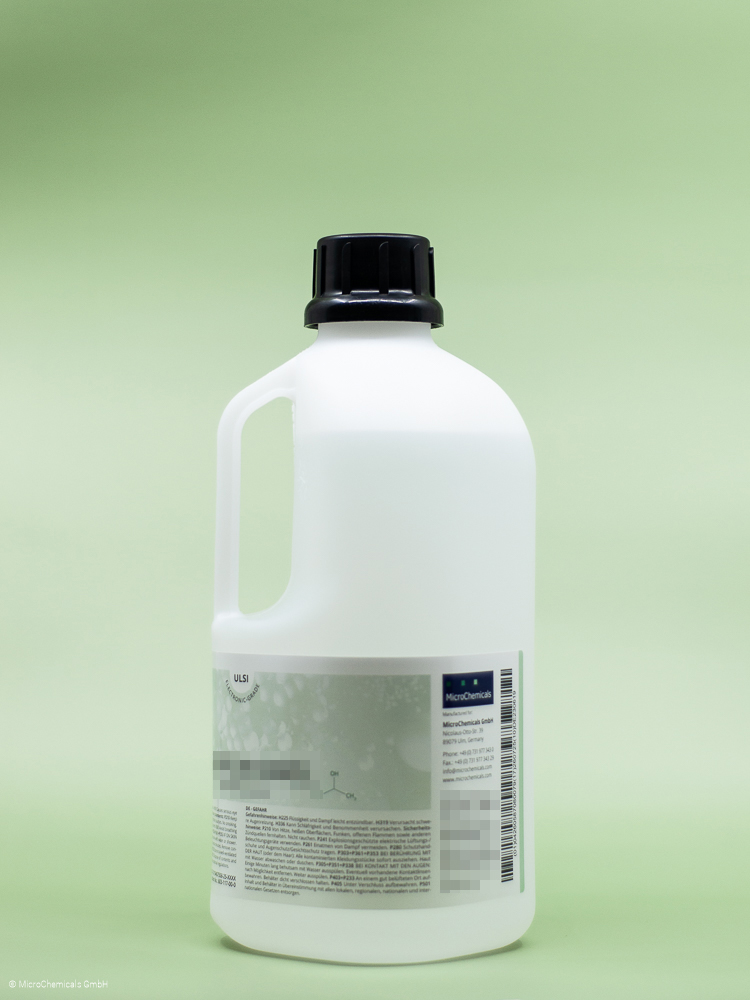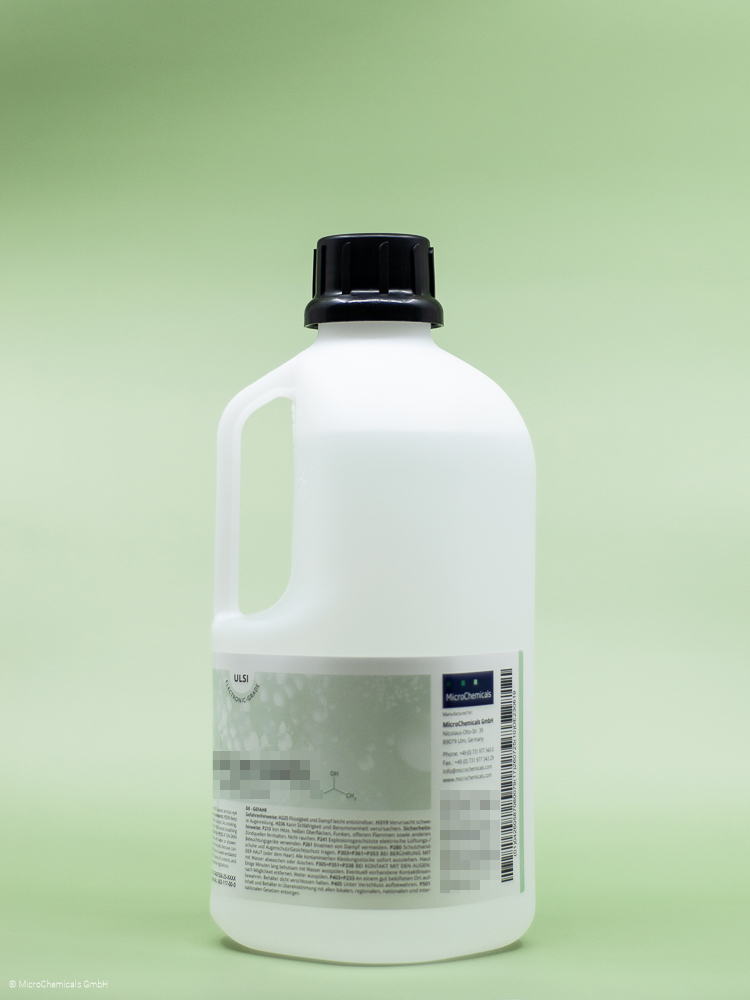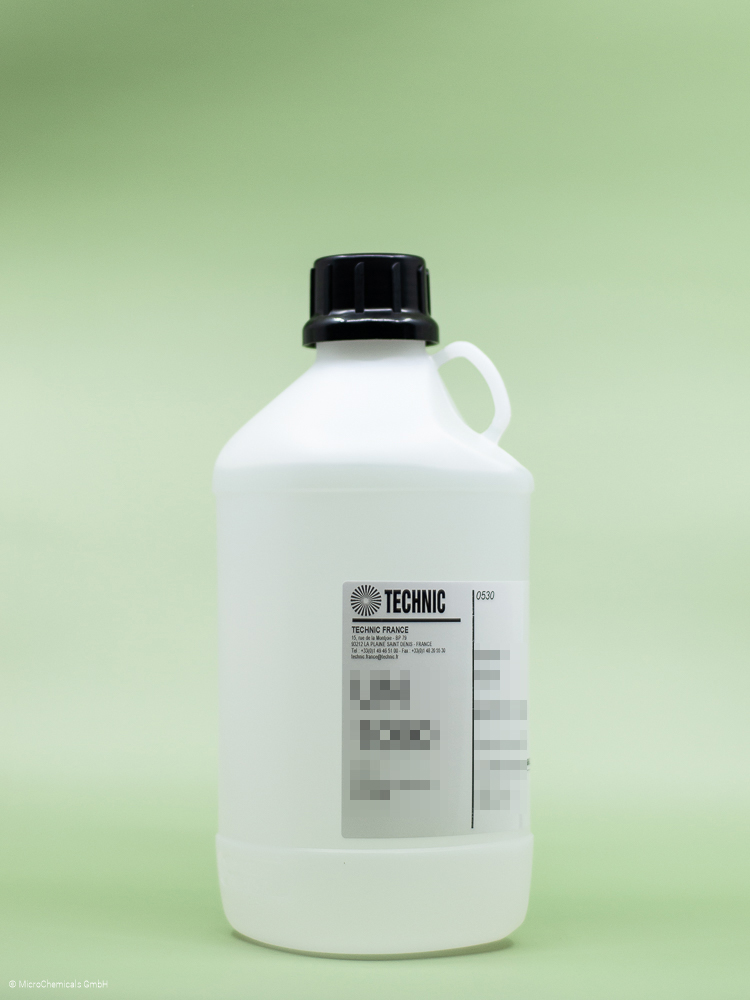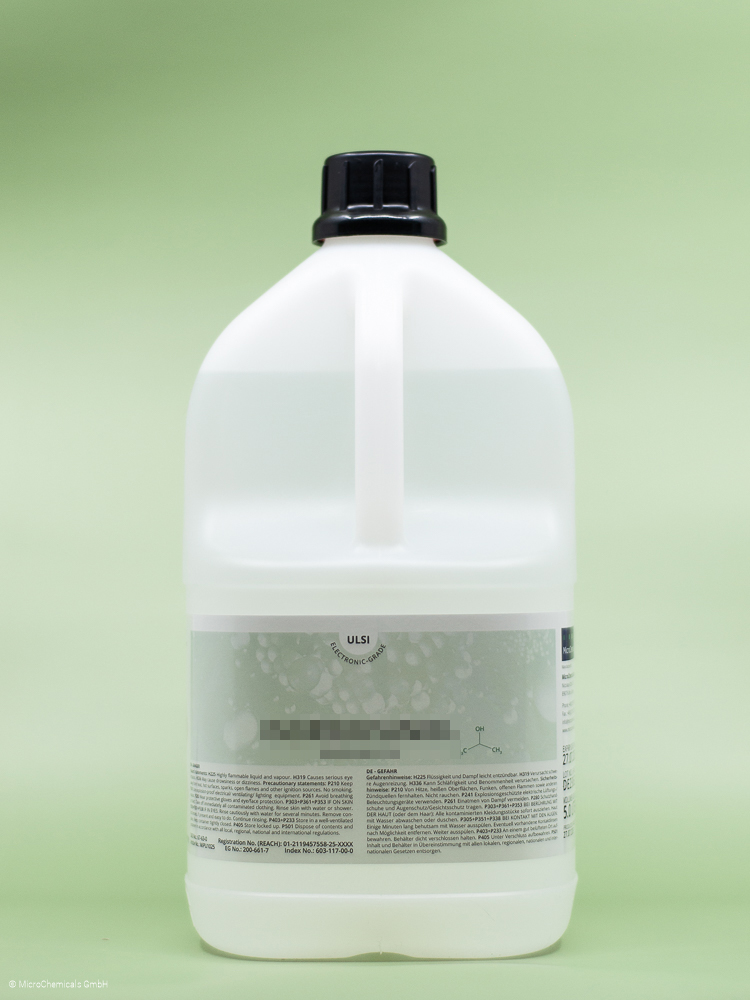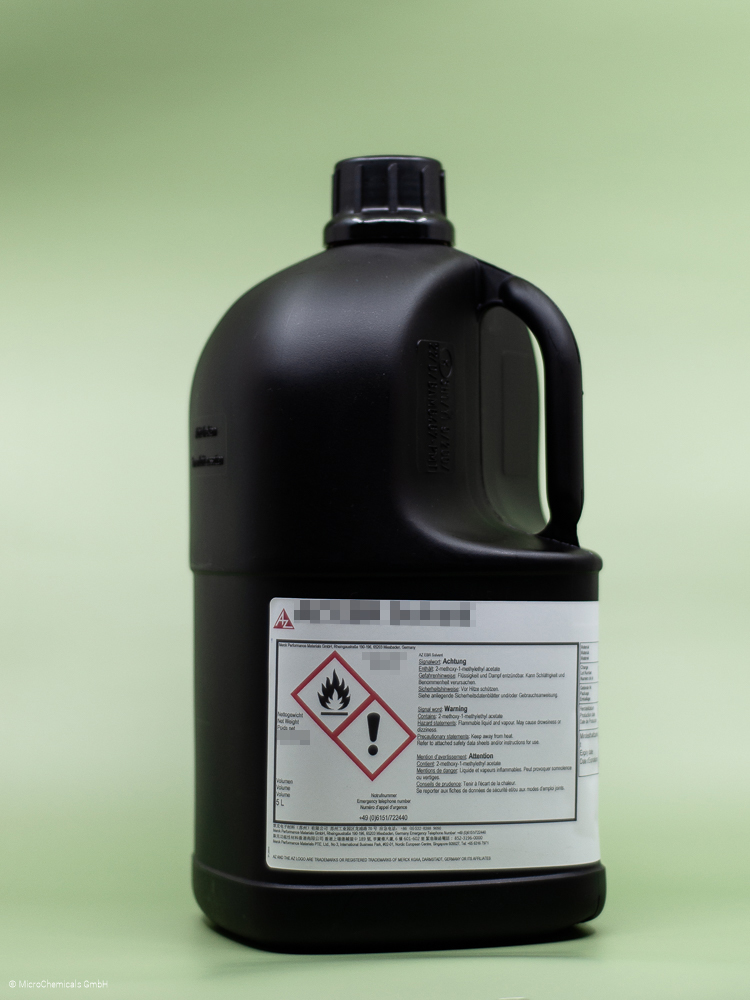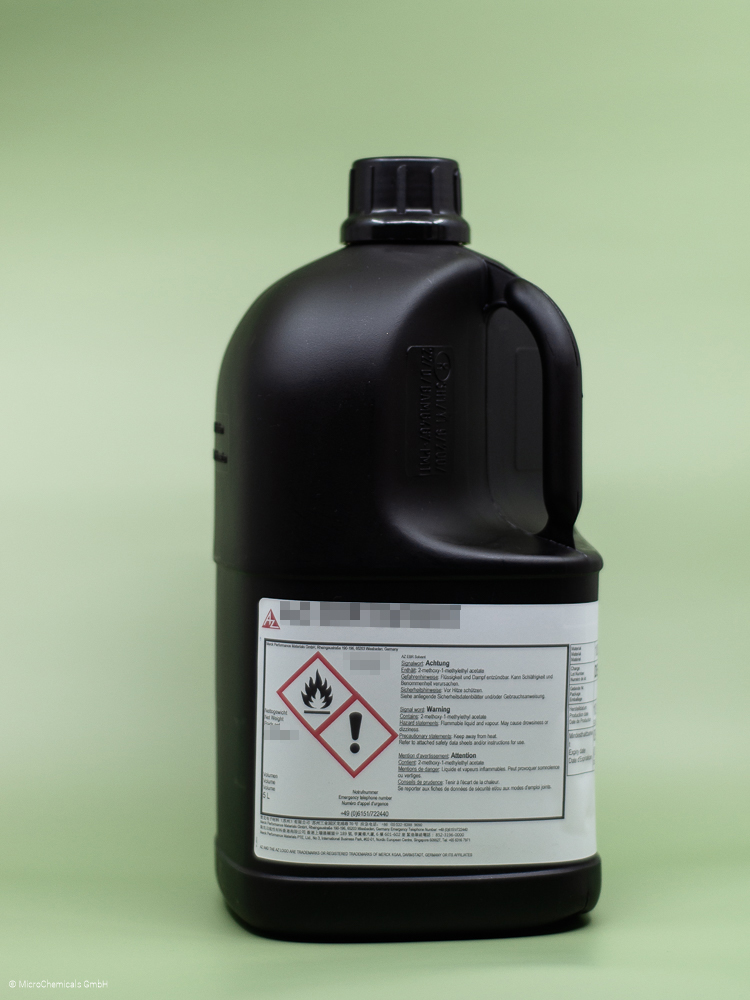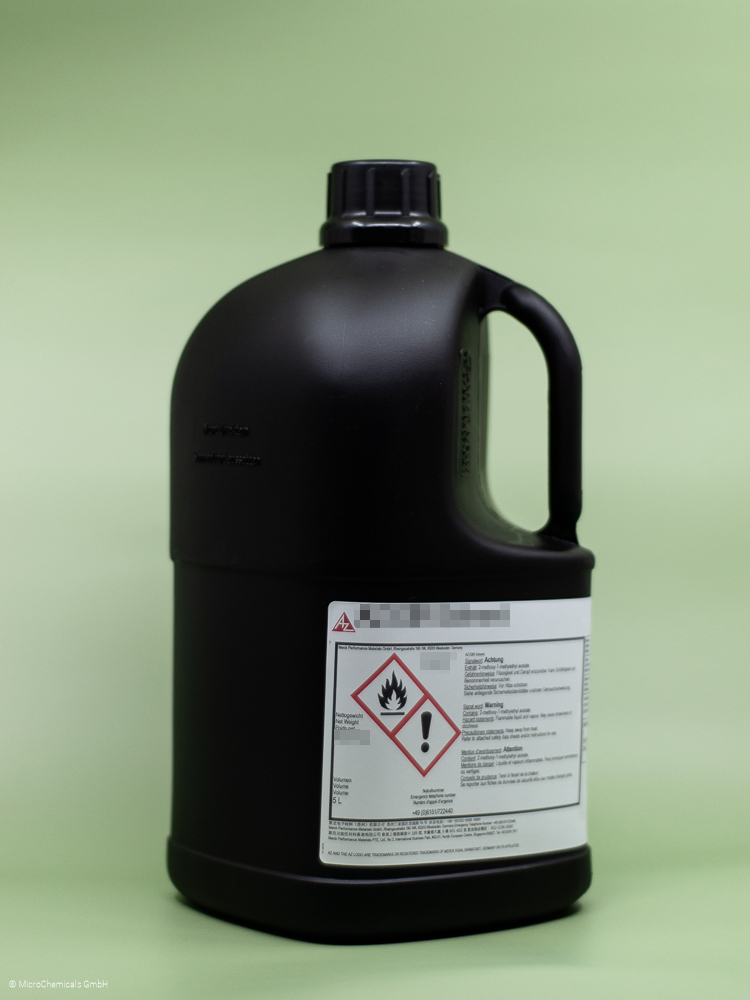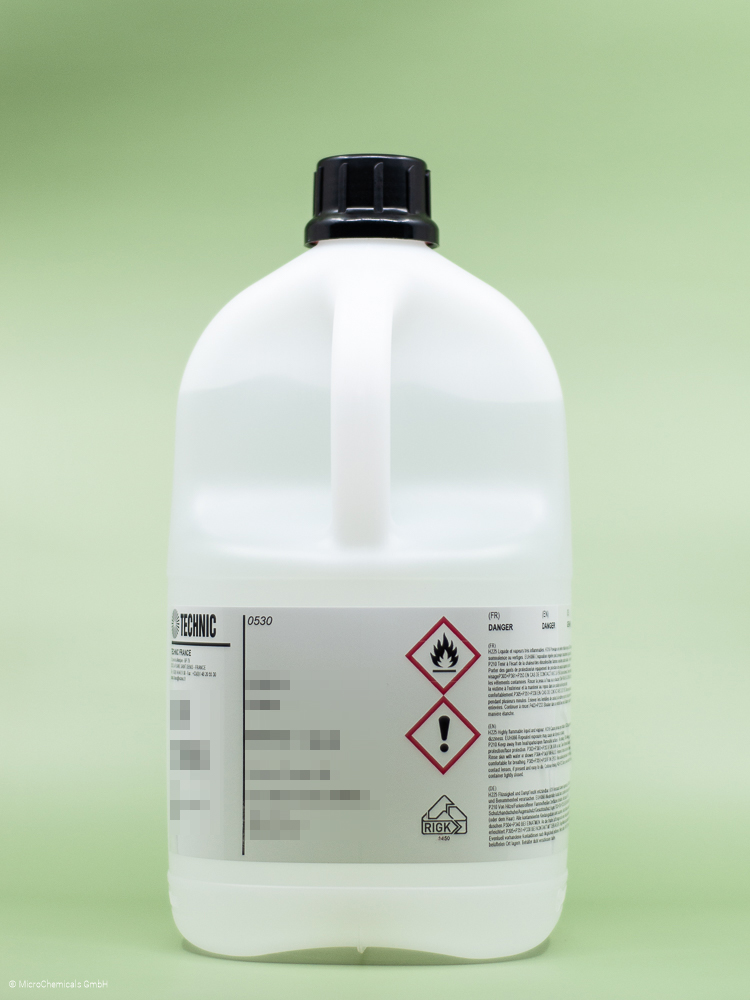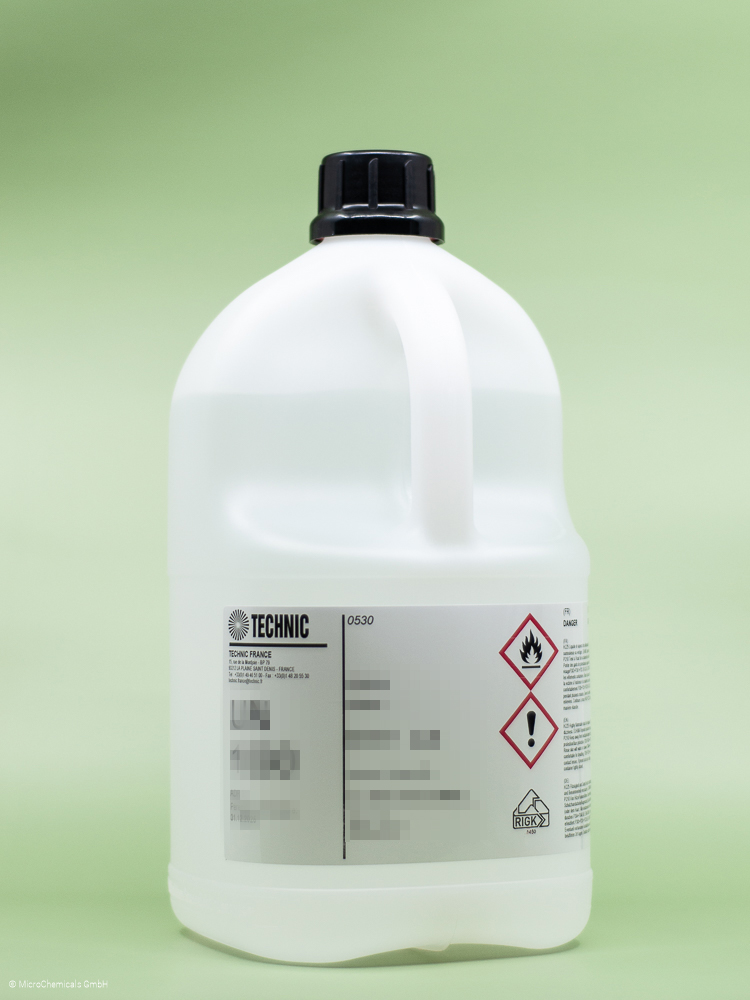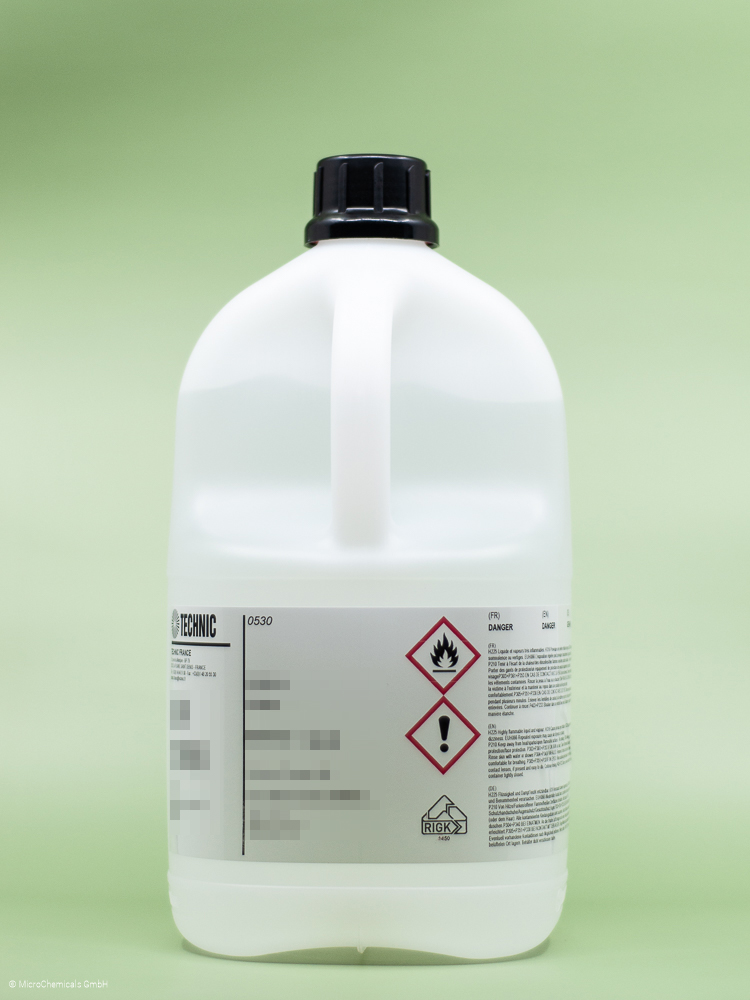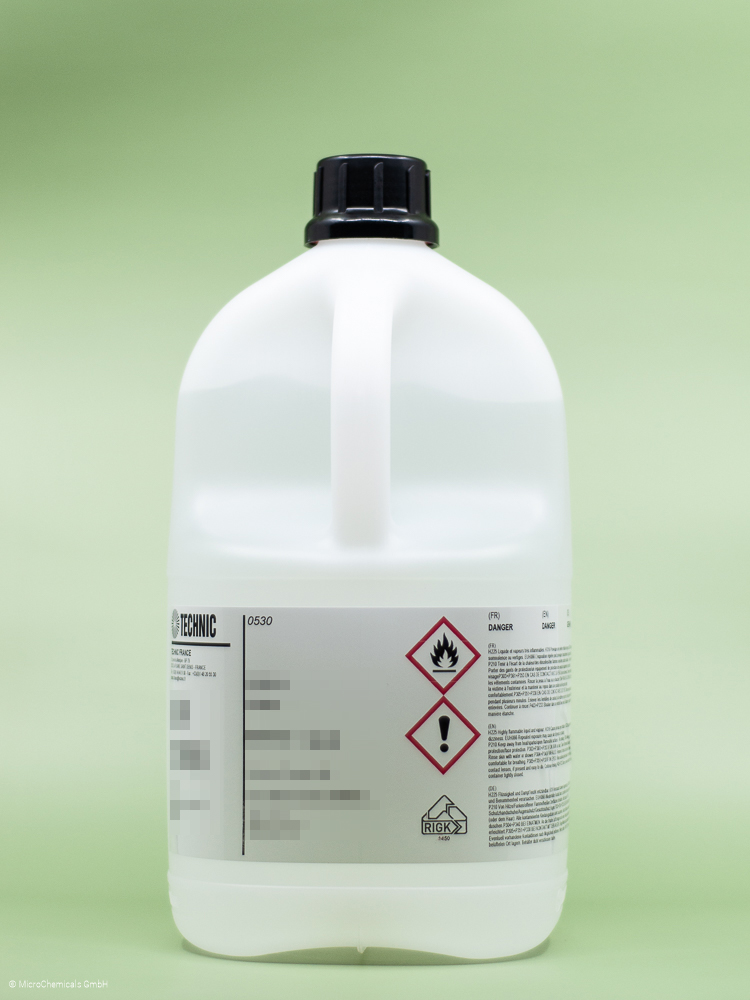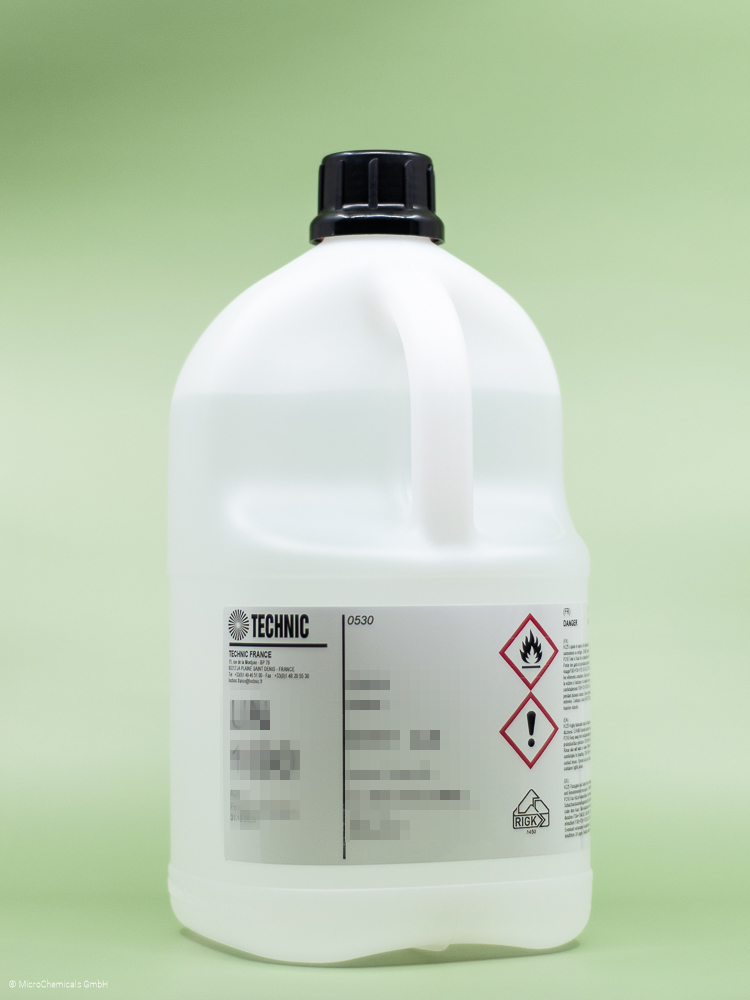TechniStrip Micro D350 - 2.50 l - ULSI
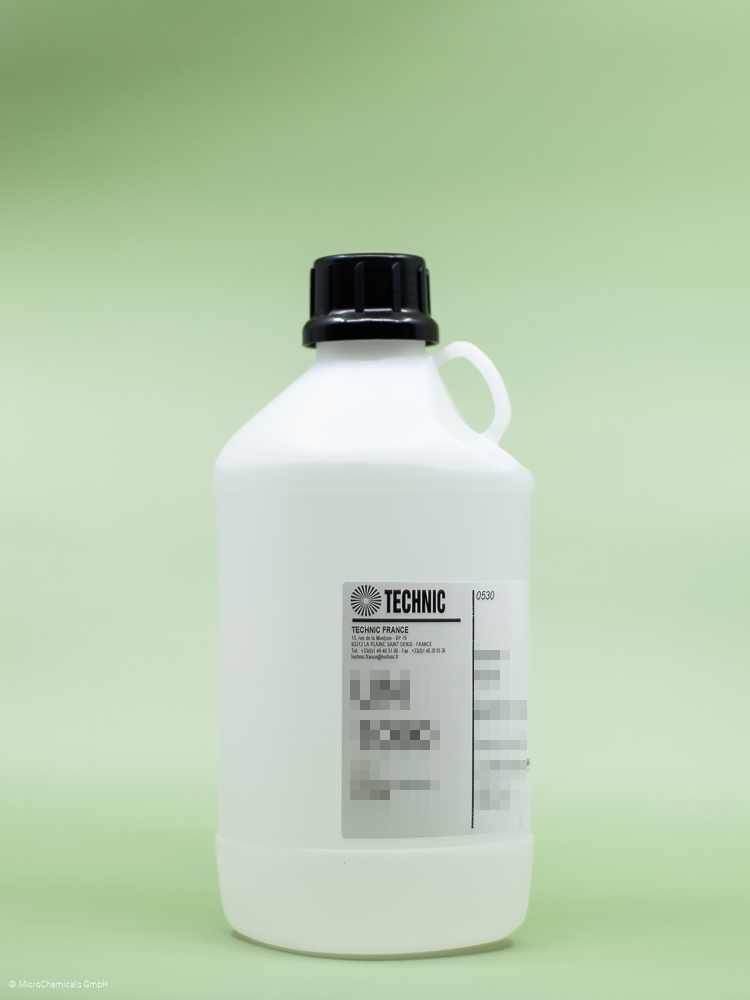















Product information "TechniStrip Micro D350 - 2.50 l - ULSI"
TechniStrip Micro D350
DMSO-based Stripper
General Information
TechniStrip® Micro D350 is a DMSO-based stripper and is a very well suited non-toxic substitute for the NMP that is regarded as toxic since a while. As a stripper or as lift off media, TechniStrip® Micro D350 can be regarded as a non toxic alternative to NMP. Mixtures with Cyclopentanone or with MEK even increase the strip performance of this product.
NOTE: The solvent TechniStrip® Micro D350 has a melting point just below room temperature, so it can possi¬bly freeze in storage in cooler rooms. Thawing may require several days, but afterwards the product can still be used as it is. For more details please download the info letter.
Further Information
MSDS:
Safety Data Sheet TechniStrip Micro D350 (ULSI) english
Sicherheitsdatenblatt TechniStrip Micro D350 (ULSI) german
TDS:
Technical Data Sheet TechniStrip Micro D350 (ULSI) english
Specs:
Specs TechniStrip Micro D350 (ULSI)
Application Notes:
Photoresist Removal english
Fotolack entfernen german
Related products
Remover

